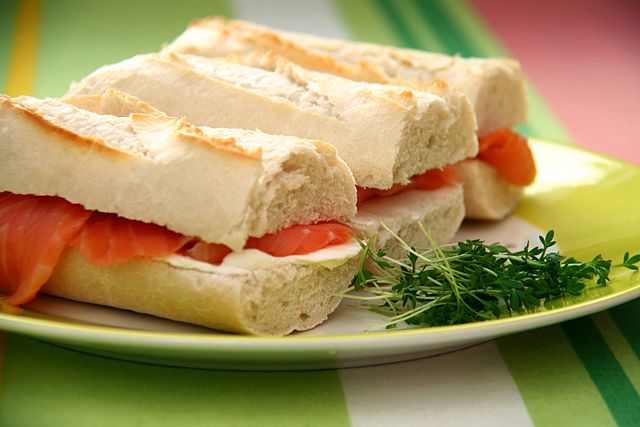Miguel de Cervantes said “All sorrows are less with bread”, but “To bake or not to bake with potassium bromate”; that is the question going around now in news and kitchen table debates in India.
Recent report by the Centre for Science and environment (CSE), India, stating 36 bread samples tested for presence of carcinogens found 32 samples having potassium bromate caused panic among some and took a dip in the sale of bread.

Potassium bromate is used as a flour improver in various countries and same time banned in food products by many countries. Potassium bromate added to four will strengthen the dough, make the bread whiter and the baked bread will rise higher. Bakers claim that the baking process involved in a well baked bread is such that the potassium bromate added to the flour will be converted to potassium bromide which is non-carcinogen. This claim of bakers is still debatable since many samples of well baked breads both wrapped and unwrapped have showed the presence of potassium bromate during tests. In India, Food Safety and Standard Authority of India (http://www.fssai.gov.in/) lists Potassium bromate and/or Potassium iodate as permissible “improver” for bread at 50 ppm max (On flour mass basis).
Apart from improving flour, potassium bromate is used in treating barley in beer distilleries.
Both potassium bromate and potassium iodate are classified as “oxidizing substances” in transport regulations.
Potassium bromate is listed under UN Number 1484, POTASSIUM BROMATE, Class 5.1, Packing Group II. IMDG Code observes the properties of potassium bromate as “White crystals or powder. Soluble in water. Reacts vigorously with sulphuric acid. Reacts fiercely with cyanides when heated or by friction. May form explosive mixtures with combustible materials, powdered metals or ammonium compounds. These mixtures are sensitive to friction and are liable to ignite. When involved in a fire, may cause an explosion.”
While loading on ships potassium bromate must be Stowed “separated from” ammonium compounds & cyanides.
Potassium iodate is not listed as a single entry, since it is a strong oxidizer it is classified under UN 1479 OXIDIZING SOLID, N.O.S., Class 5.1, Packing Group II. Potassium iodate under 1479 also has incompatibility issues with various other substances and shall be stowed on board ships “separated from” cyanides, ammonium compounds, peroxides and powdered metals.
Following bromates are having segregation issue with many other dangerous goods, Magnesium bromate, Potassium bromate, Sodium bromate, Zinc bromate, Barium bromate and Ammonium bromate.
Class 5.1 is a difficult cargo to load with respect to segregation especially in packaged form on container ships and other conventional vessels as this class will conflict with most other classes with minimum distance from other classes or when under deck different cargo hold or separated longitudinally by an intervening complete compartment or hold.
While loading oxidizing substances on board vessels, the cargo spaces must be cleaned thoroughly before loading and any combustible materials which are not necessary for the stowage of cargo must be removed from the hold. Securing and protecting materials must be made of non-combustible materials and if dry wood dunnage is required then only clean dry dunnage must be used. After discharge the cargo space must be put to thorough cleaning and inspection to ensure no residual cargo escaped into other cargo spaces or bilges and may come into contact with combustible materials.
Classification of solid substances of class 5.1 involves use of potassium bromate. The procedure for conducting the test is given in the Manual of Tests and Criteria, part III, subsection 34.4.1 (test O.1) and alternatively, in subsection 34.4.3 (test O.3). Tests are conducted on the substance to be evaluated mixed with dry fibrous cellulose in mixing ratios of 1:1 and 4:1, by mass, of sample to cellulose. The burning characteristics of the mixtures are then compared:
- in the test O.1, with the standard 3:7 mixture, by mass, of potassium bromate to cellulose. If the burning time is equal to or less than this standard mixture, the burning times shall be compared with those from the packing group I or II reference standards, 3:2 and 2:3 ratios, by mass, of potassium bromate to cellulose respectively; or
- in the test O.3, with the standard 1:2 mixture, by mass, of calcium peroxide to cellulose. If the burning rate is equal to or greater than this standard mixture, the burning rates shall be compared with those from the packing group I or II reference standards 3:1 and 1:1 ratios, by mass, of calcium peroxide to cellulose, respectively.
In EU/CLP (Regulation on classification, labelling and packaging of substances and mixtures) of European Union, hazard class and category codes for potassium bromate include Oxidizing Solid category 1, Carcinogen category 1B and Acute Toxicity category 3.
Signal Word: Danger
Hazard Statement: H271: May cause fire or explosion; strong oxidiser
Precautionary Statement Prevention: P210 (Keep away from heat, hot surfaces, sparks, open flames and other ignition sources. No smoking.) P220 (Keep/Store away from clothing/…/combustible materials) P221 (Take any precaution to avoid mixing with combustibles/…) P280 (Wear protective gloves/protective clothing/eye protection/face protection.) P283 (Wear fire/flame resistant/retardant clothing.)
Refer EU/CLP & IMDG Code 37th Amendment for full details.


 WhatsApp your queries
WhatsApp your queries